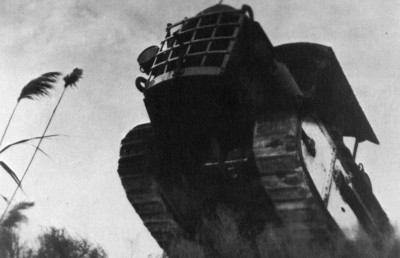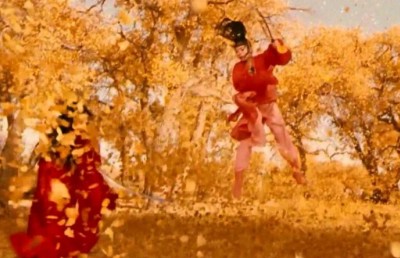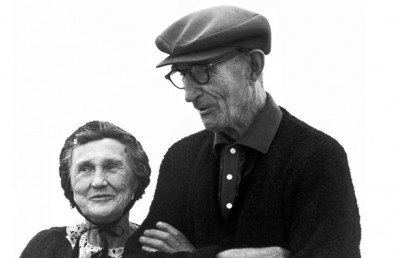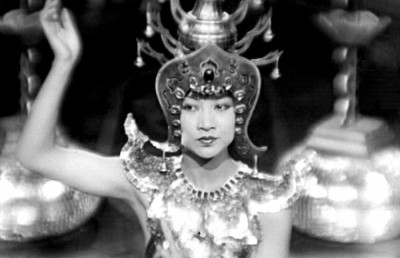Chronicle of a Disappearance: The Scared and The Mundane
Palestinian Satire

The film Chronicle of a Disappearance (Elia Suleiman,1996) uses a non-linear, disruptive, repetitive and fragmented pattern to emphasize the fragmented identity of Palestine. Suleiman poses many questions and denies the viewer answers in order to engage viewers and encourage them to actively participate in making sense of his film. The film consists of two parts; Part One Nazareth: A Personal Diary and Part Two Jerusalem: A Political Diary. I will discuss Suleimans’ use of fragmentation and repetition throughout the film’s narrative, wherein a seemingly non-linear fragmentation actually gives way to linear development. I will also discuss the use of irony to compare the two parts of the film. Suleiman uses Nazareth to represent a place that is seemingly less politicized, whereas he represents Jerusalem as a politically charged city as a way of underscoring how one perceives what is ‘political’. I understand this to be an investigation of the arbitrary boundaries between what qualifies as sacred and as mundane. Suleiman juxtaposes these two cities to expose conflict and contradictions in perception. Furthermore, Suleiman uses the two cities to show how conflict diffuses into daily life and, alternately, how conflict can in fact be daily life. Suleiman creates decentered images through repetition and fragmentation; in other words, he portrays images without a center, leaving the viewer to piece together what sense there is not only in the narrative but also in the daily life of Israel. In an interview Suleiman describes Chronicle of a Disappearance as his attempt to punctuate the “transgression of national spaces” and “detachment from specificity of place” (95).
Rashid I. Khalidi explains in his essay “Contrasting Narratives of Palestinian Identity” that any understanding of Palestine and Palestinian identity is comparable to one of “a distant example”; he argues that “an otherwise almost incomprehensible series of events (like the Crusades) [1] can only be understood in terms of such a combination of passion with ignorance” (190). It is certainly possible to read Chronicle of a Disappearance as a series of somewhat incomprehensible events, understood only through a combination of passion and ignorance. The viewer is challenged to seek meaning for themselves from a series of events in which no apparent coherence exists. The viewer must be ‘ignorant’ to the idea of a unified linear narrative and ‘passionate’ about understanding this series of seemingly unrelated and incoherent events. The disruptive and fractured narrative does eventually give way to a linear story, but only once the viewer has let go of hopes of a unified whole. Suleiman’s aim is clearly to “question collective notion of nation” (96).
During “Part One”, the use of a close-up on a flashing computer screen which reads “Nazareth: A Personal Diary” leaves one to guess whose perspective the narrative will adhere to. The viewer is aware that there has not been a disappearance, but instead a return. The idea of return and the title Chronicle of a Disappearance allude to exile. According to Kamal Abdel-Malek, both exile and return are common themes in Palestinian films (163). Abdel-Malek also makes the observation that “exile’s return is disappointing” (144). During the first part, which consists of observations of daily life in Nazareth, each day is fragmented by a return to a close-up of the computer screen which reads “and the next day”. What follows, is a series of vignettes and the retentive use of tableaux. No character is explained. There are many long shots and long takes with little to no camera movement. Nazareth is static.
Through the use of repetition Suleiman slowly adds to each vignette, giving a sliver more information or connection. He frequently uses irony to punctuate the absurdity and humor of this static existence. A man who runs a tourist shop called “The Holyland” fills bottles of holy water and smokes on the step outside the door to the store. Occasionally, a friend visits and they sit in silence and smoke. A woman sleeps on the couch in front of the television. Some men meet in a café and discuss if ‘man’ has descended from animals. An elderly man plays Backgammon alone on his computer while smoking a hookah; both activities typically occur in the community. Suleiman evokes the lack of community and the absence of a cohesive and unified identity. In Khalidi’s essay “Contrasting Narratives of Palestinian Identity,” he quotes Stuart Hall’s concept of identity as “partly the relationship between you and the Other” (187). What Suleiman denies the viewer is not only a relationship, but also the Other. Too, dailiness evokes ritual.
Suleiman shows the elderly man (his father) straightening up his apartment; he plays with his dog, and tends to his pet bird (yes, this caged bird sings). All the while, in the background the radio tells of conflict, struggle and war in Eastern Europe and everywhere, but ‘here’ (Nazareth). A group of men watch an arm-wrestling competition between an elderly man and a younger man. Life goes on. Between scenes the viewer always returns to the computer screen reading “the next day…”
A man posts a flyer. Many passers-by stop and read the poster, but the viewer is denied the reverse shot of what the poster says. Suleiman employs denial throughout the film, in both parts one and two. The denial of information is central to the understanding of the fragmented identity of the Palestinian. For Khalidi a lack of cohesion within Palestinian society has repeatedly hindered a unified identity (208). In line with the use of fragmentation and non-linear repetitive structure, the viewer is denied and must be active to make sense of the scene. Negation, Khalidi explains, is an important key in the denial of self-determination for Palestinians (206). The viewer is excluded from discourse, invoking one understanding of the Palestinian identity.
Occasionally, the computer screen illuminates a scenario by giving more information than “the next day…”. At one point the computer reads “an interview with a writer, with an idea for a movie”. In the scene that follows, an elderly man tells the story of asking his own grandfather “Tell me a story about Istanbul”. The story never changes: the writers’ grandfather promises a story “you will never forget!” The story itself is always about having a small amount of money, passing all the shops, walking to a park where a man in white would sell him a sheep’s head with rice and bread, and he would eat it in a park on a bench. Here again, repetition is key insofar as the story told by the grandfather never changes. The simplicity of the story evokes a simpler time, but is also reminiscent of the daily life of Nazareth: repetition, the mundane, ritual and seemingly non-politicized life. The writer says he always expected a story of adventure, but the grandfather’s story never changed. This parallels part one of Chronicle of a Disappearance, wherein the viewer may expect adventure, espionage, and political thrills but is instead treated to a view of life in Nazareth that is mundane, apolitical and perhaps even disappointing. [2]
The scene “interview with a priest” tells a story of changing landscape and the priests’ perception of change. He perceives a sort of invasion by tourists and settlers who have little or no regard for the sacred. The Sea of Galilee, he explains, is where Jesus walked on water. Now, it is full of the shit of French and American tourists; he laments, “Now anyone can walk on the water”. Suleiman uses this scene to punctuate the blending of the scared and the mundane and to expose the contradictions in the priest’s perceptions of what is sacred. According to Christian belief the shores of the lake of Galilee was the site of many of Jesus’ teachings, and where many miracles occurred. Nazareth by this perception is a sacred place. According to Khalidi, nationalism has been rooted in attitudes of Palestine as “a sacred entity” (217). For the Palestinian, the sacred has long been entangled in the mundane.
Suleiman himself has defended his use of wry humor and irony blended with self-depreciation as a mode of giving hope. He argues that to be self-critical and self-mocking “requires a certain freedom” in the face of stagnation (100). The most absurd, poignant and ironic scenes occur in “Part Two: A Political Diary” where Suleiman relocates to Jerusalem. Jerusalem dominates “political” life in Israel, regardless of the fact that the shores of Galilee have long been the site of war and dispute, and Nazareth has been part of Palestine in the early 20th century and partitioned as part of the Jewish state during 1947. Jerusalem represents the ‘sacred’ while Nazareth represents the ‘mundane’ (though ironically, Nazareth is perceived as equally sacred for Christians); Nazareth is the ‘interior’ space of contemplation while Jerusalem is the ‘exterior’ space of action. In a meeting in the “American Café” a Frenchman tells Suleiman “Everything you do is perceived as political”. Suleiman presents a series of bizarre scenarios, many of which blur the line between sacred and mundane, the political and the absurd.
He continues to make use of repetition and fragmentation throughout part two. It is here that the viewer is more clearly rooted to a perspective and Suleiman himself becomes the “lead” actor. However, it is in Jerusalem that he introduces a second coherent perspective, that of a young Arab woman, Adan. Throughout the second half of the film, the narrative shifts between Suleiman’s perspective and that of Adan’s. These overlapping senses of identity underscore the lack of unification amongst the Palestinians in Jerusalem and expose the contradictions inherent in shared beliefs and values.
Both Suleiman and Adan are seen at a realtor’s agency looking for an apartment. Suleiman finds one, Adan does not. What follows is a scene that exposes the fallacy of the belief in common language as a cohesive element of community. Adan speaks fluent Hebrew. As she makes numerous phone calls in her search for an apartment, it is repeatedly commented that her Hebrew is excellent, but once she speaks her name, she is denied.
Suleiman presents the most comical scenes using the device of denial or negation. He presents a conference setting wherein he is introduced as a young filmmaker who has just returned from a self-imposed exile in New York City, who is here to present his first feature film, Chronicle of a Disappearance . This is both disruptive to the narrative, blending reality and fiction, and breaks from the pattern of repetition. He is asked to approach the podium to speak about the film. What transpires is one long undisturbed take, during which Suleiman adjusts the microphone and the soundman attempts to fix the redundant feedback which disables Suleiman from speaking. A baby cries, cell phones ring, several audience members get up and leave, some speak loudly on their phones. This goes on for a few minutes before returning to the fragmented, disjointed, and repetitive narrative the viewer has by this point become accustomed to.
In two similar scenes, Suleiman enters a theatre-like building. He walks across a light stage and takes a seat in a chair that is made of leather representing the flag of Palestine. On a television he watches some Arab men dance and hears a song about return and the desire for a unified Palestine. Also on the stage is a female mannequin. This scene is repeated with Adan, though the men on the television dance in reverse. According to Muhammad Hallaj in his essay “Palestine-The Suppression of an Idea,” the development and expression of Palestinian culture has been attacked on every front of cultural activity. Depictions of the four colors of the Palestinian flag were even banned in 1979 (59-62). The repetition of this scene may be understood as the most overtly political of the film, though it is also one of the most absurd and theatrical. Suleiman speaks of working to “dismantle the flag” by deconstructing the national image, problematizing the fear that without representation or image, “artistic inspiration will disappear into nothing” (99).
Somewhere in the middle of all this, Israeli police officers exit their van to relieve themselves on a wall. As they peel away in the van, a walkie-talkie falls to the ground and is left behind. For the remainder of the narrative the viewer hears what the Israeli police are saying. Their descriptions of investigations often humorously parallel the scenes themselves. Again, in one of the films funniest moments, Suleiman sees an Israeli swat team pull up outside his apartment. He does not answer the door, so they break the window. Silently, in his pajamas and slippers he ushers them through the house, opening doors for them and leading them out the back. Moments later the viewer hears the swat team describe over the walkie-talkie the interior of Suleimans’ apartment. It is only later in the narrative that the viewer comes to understand that Adan has found the walkie-talkie and is listening to it. This type of rupture in the narrative happens through the use of non-diegetic sound. The irony comes from the parallel of image and sound. Though Suleiman, who is in the scene, does not hear the walkie-talkie, he understands to an extent that he is being watched. However, only the viewer is privy to the extent of the investigation. Over the walkie-talkie, the Israeli police describe everything in his apartment, from the slippers he wears to the painting on the wall.
Another effective use of wry humor and irony is visible the first time the viewer sees where Adan lives. On her desk are a gun, a grenade and the walkie-talkie. The gun and the grenade are both fakes; they are actually lighters. If she is to be read as a terrorist, these details are a comment on the stereotype of the Palestinian terrorist who would own such weapons. Further, their presence is ironic in that Adan’s only real mode of disruption is to use her perfect Hebrew to ‘play’ with the police over the walkie-talkie. In one series of scenes she orders the police all over Jerusalem, even ordering them to leave Israel altogether, and finally to her own home, where she has wired herself like a suicide bomber. But her wires only detonate harmless fireworks, which distract and confuse the police foiling their attempt to arrest her. This can be read as representing the futility of Palestinian attempts to fight an organized military; in reality, fighting with stones against missiles, and in Suleiman’s film, with fireworks against guns.
Meanwhile, Suleiman has packed his bags and returned to Nazareth where nothing has changed. In the final shot, his mother and father sleep on the sofa and armchair respectively, as the flag of Israel waves and the national anthem plays on the TV. This final shot witnesses Suleiman yet again displacing and de-centering the Palestinian in Israel. Through the exquisite use of rupture, fractured non-linearity, repetition, irony, and wry humor, Elia Suleiman exposes the fractured Palestinian identity: the lack of cohesive unity, the denied, the negated and the absurd. In Chronicle of a Disappearance , the political is pointedly focused beyond the absurd and simultaneously diffused into everything. The interior and the exterior are disjointed. The sacred is the mundane and the mundane, sacred. Exile is a choice and return is always a disappointment.
Endnotes
1 Parenthesis mine.
2 Thus supporting Abdel-Malek’s point about the ‘disappointment of return’.
Bibliography
Abdel-Malek, Kamal. The Rhetoric of Violence: Arab-Jewish Encounters in Contemporary Palestinian Literature and Film. New York: Palgrave MacMillan, 2005.
Hallaj, Muhammad. “Palestine—The Suppression of an Idea” in The Link. Volume 15, Issue 1 (January-March 1982). Available online at Americans for a Middle East Understanding
Khalidi, Rashid. “Contrasting Narratives of Palestinian Identity” in Patricia Yaeger’s (ed) The Geography of Identity. Ann Arbour: University of Michigan Press, 1996, pp. 187-222.
Suleiman, Elia. “A Cinema of Nowhere: An Interview with Elia Suleiman” in Journal of Palestine Studies Vol. 29, No. 2 (Winter, 2000), pp. 95-101













